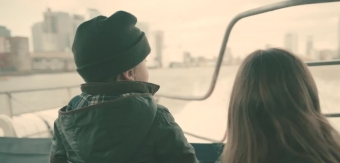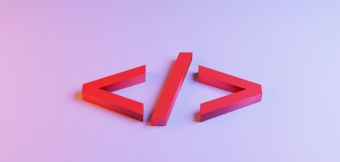In today’s world, where visual content is increasingly important, professional graphic design can be a crucial factor in your business's success. If you’re planning to update your brand identity or completely rethink your visual communication, you definitely need a professional graphic designer. You can find a specialist among freelancers for project-based work or invite one to join your team for ongoing collaboration. Nowadays, it’s not necessary to hire a graphic designer full-time to get high-quality and effective design within the required timelines.
What is Graphic Design?
Graphic design is a form of visual communication that conveys ideas, values, and meanings through images, fonts, symbols, and other graphic elements. The main goal of graphic design is to communicate content, inform, educate, inspire, or motivate people to take specific actions using visual language. Graphic design can be digital or print, vibrant or monochrome, and may include photographs, illustrations, text, or even animation.
Well-thought-out design helps to:
-
Increase brand or company recognition.
-
Establish the desired image.
-
Boost sales and conversion rates.
-
Make information clearer and more accessible.
-
Highlight and emphasize uniqueness.
Who is a Graphic Designer?
A graphic designer is a specialist who creates visual concepts to communicate ideas, messages, or brand values to an audience using color, shape, fonts, images, and composition. They shape the brand’s image and contribute to its development through branding, marketing and advertising materials, print media, and more. A graphic designer significantly influences our perception of a product, service, or business.
The role of a graphic designer is to convey information through clear, attractive, and memorable visuals, encouraging the desire to purchase a specific product or service. Design visuals and layouts help a business stand out among competitors and capture the attention of potential customers.
What Are the Typical Responsibilities of a Graphic Designer?
A graphic designer's tasks can vary depending on the specific project and industry. Here are some common responsibilities:
-
Creating a brand's corporate identity (branding), including both comprehensive and individual elements such as logos, fonts, colors, etc.
-
Designing print materials, such as forms, brochures, catalogs, newspapers, magazines, flyers, and books.
-
Developing offline advertising materials, including banners, posters, postcards (flyers), billboards, and signage.
-
Preparing online advertising materials, which includes creating web banners, creatives for targeted ads, email newsletters, presentations, images for blog posts, and visuals for business social media accounts.
-
Creating illustrations, icons, and pictograms.
-
Designing labels, packaging, and branded merchandise.
-
Editing, retouching, and correcting photos to achieve a specific effect or message.
-
Creating infographics to simplify the interpretation of information.
-
Developing motion graphics (videos).
-
Designing spaces, including signs, wayfinding systems, and plaques for stores, restaurants, coworking spaces, and offices.
Which Designer Does Your Business Need: Freelancer or In-House?
In 2024, distinguishing between freelance designers and in-house designers is becoming increasingly difficult, as the level of professionalism in both can be equally high. The main difference lies in the individual’s skills rather than the form of collaboration.
Choosing a Specialist Depends on Your Business Needs:
-
Art Direction: It’s best to bring a specialist onto your team, as they will be responsible for the appearance of your product or business, which affects positioning, market presentation, and ultimately profit. Deep understanding of the business and full commitment are critical, which can be challenging to achieve with freelance collaboration.
-
New Brand Identity: This can be handled by a freelancer or agency working on a project basis. For a successful rebranding, a fresh approach is needed, and while having in-house designers is desirable, the best results are often achieved with external specialists.
-
Routine Tasks: Such as creating online and offline advertising materials can be delegated to either an in-house designer or a freelancer, depending on the volume of current projects.
-
Motion Design: Both freelancers and in-house designers can handle these tasks effectively, but it depends on the complexity, quality, scope, and detail of the project.
If the tasks are regular, labor-intensive, or require a deep understanding of your business, hiring an in-house designer is usually the best choice.
Most companies engage freelancers for project-based work. However, it is a misconception to think that freelancers are only useful for one-time tasks. Many freelancers who started a few years ago continue to work with their clients (companies, agencies, projects) for even longer than most in-house employees. The high-level skills of freelancers are highly valued, and companies often find it more advantageous to hire experienced freelancers rather than maintain a full-time specialist.
Where to Find a Graphic Designer?
Let's explore which online platforms are best for finding a graphic designer. The following sites are valuable resources for locating specialists. You can easily find both talented freelance designers and professionals ready for team collaboration here.
-
Behance
-
Dribbble
-
Upwork
-
Fiverr
-
Freelancer
And, of course, Taker | Maker.
How to Prepare for the Search?
-
Define your visual goals: What exactly do you plan to achieve with the design?
-
Understand your style: What type of design do you prefer—modern, minimalist, or vintage?
-
Outline the scope of work: What specifically and how much do you need to be created?
-
Assess your budget: How much are you willing to spend on this work?
-
Set deadlines: When do you need the final result?
How to Evaluate a Graphic Designer's Expertise?
At Taker | Maker, when creating a shortlist of graphic designers for a specific client brief, we consider the following factors:
-
Portfolio: We work with mid-level and senior specialists, so we look for examples of work at that level in the portfolio, as well as projects that match the client's style and requirements.
-
Experience: Our designers usually have at least 5 years of professional experience and have worked across various industries, projects, and tasks. We value multitasking abilities and want to see 2-3 areas where the designer excels.
-
Skills: Creativity, including unique ideas and solutions; technical proficiency, specifically a high level of expertise with key software tools; attention to detail; and strong communication skills.
-
Budget and Project Deadline: Compatibility with the project budget and timeline.
Essential Knowledge and Skills for a Graphic Designer
A successful graphic designer must possess certain skills and qualities that help them effectively handle various tasks. Here are the key ones:
-
Understanding Design Fundamentals: It is crucial to grasp the principles of design, color theory (selection and combination of colors), typography (text formatting, font selection), and compositional rules (harmonious arrangement of text, colors, and images). A graphic designer should be able to position elements so that they not only look appealing but also fulfill their functions.
-
Understanding Marketing Principles and Buyer Psychology: This allows for the accurate communication of the intended message to the target audience.
-
Advanced Software Proficiency: Expertise in tools such as Photoshop, Illustrator, InDesign, After Effects, Premiere Pro, Figma, Midjourney, Firefly, and Copilot.
-
Drawing and Illustration Skills: Ability to create drawings and illustrations either manually or using graphic tablets.
-
Technical Competence: Knowledge of file formats, resolution, and requirements for different types of media.
-
Analytical Thinking: The ability to analyze client briefs and understand audience needs.
Important Personal Qualities for a Graphic Designer
A graphic designer should possess certain soft skills that help in creating effective designs and building productive working relationships:
-
Sense of Style and Creative Thinking: Design stands out through unconventional presentation of familiar elements, use of visual metaphors, and the ability to combine different elements into a harmonious, cohesive image.
-
Communication and Feedback: The ability to present work effectively, justify chosen approaches, negotiate, and be open to receiving and adapting to feedback from clients and colleagues.
-
Focus: The ability to immerse in complex technical tasks, carefully work on small details of images, and thoroughly research references.
-
Time Management Skills: Even in-house employees often work on multiple projects simultaneously, not to mention freelancers.
-
Desire for Continuous Development: The industry is highly dynamic, with new software regularly emerging and visual trends changing, leading to evolving requirements for candidates.
What is the Cost of Hiring a Graphic Designer?
The salary level of graphic designers in Ukraine depends on various factors, such as:
-
Experience: The more experience a designer has, the higher their salary.
-
Skill Level: Designers with advanced software skills, strong design principles, and experience in specific industries generally earn more.
-
Location: Salaries are typically higher in large cities and regions with a high cost of living.
-
Type of Employer: Designers working for large companies usually earn more than those freelancing or working in small studios.
-
Project Complexity: Designers working on complex projects generally earn more than those handling simpler tasks.
Not sure if your visual identity matches your product? Looking to elevate your brand with exceptional and professional design? Finding the perfect graphic designer for your business can be challenging, but it's a crucial decision that can significantly impact your success.
Taker | Maker is here to help you:
-
Define clear objectives and expectations
-
Find and select qualified designers who meet your needs
-
Evaluate portfolios and experience of different candidates
-
Conduct interviews with potential designers
-
Choose the best designer for your project and brand







